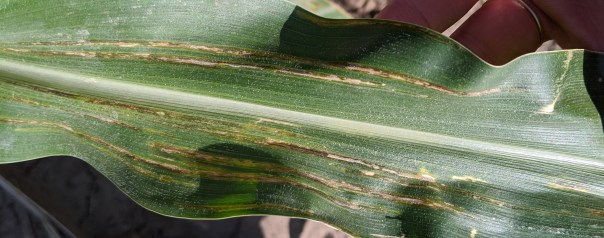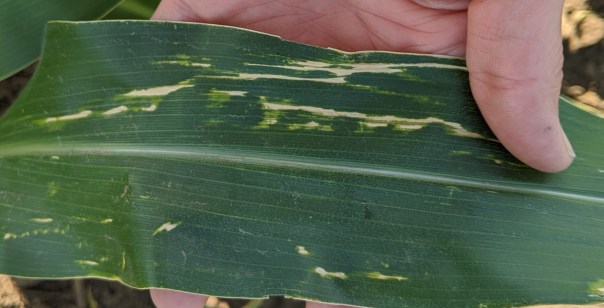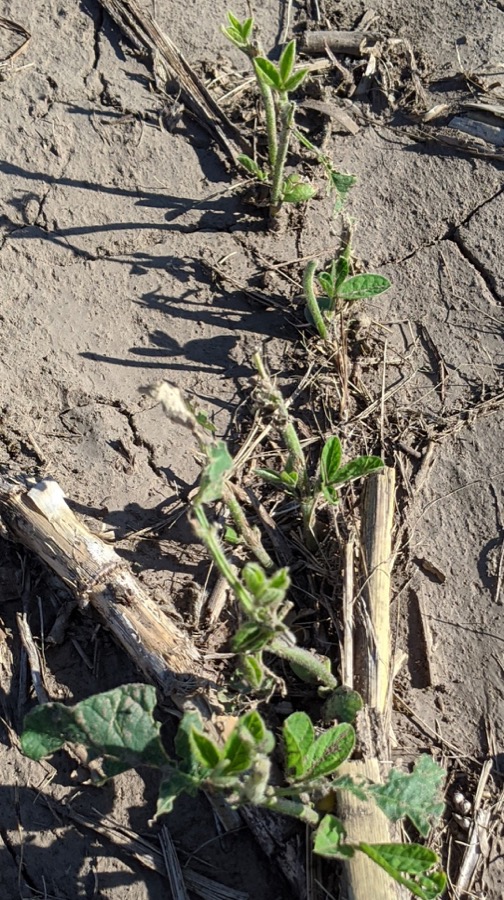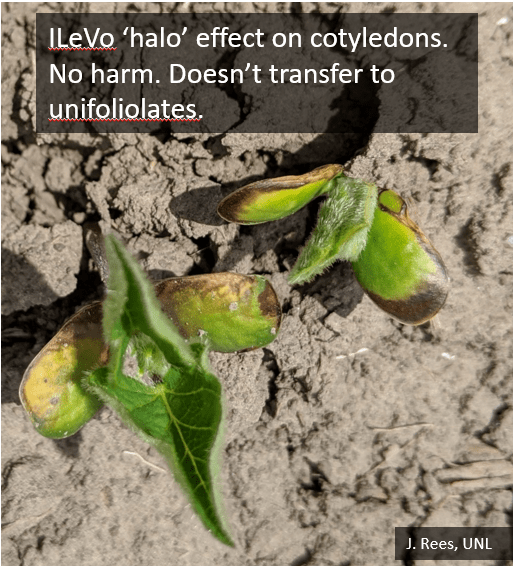Monthly Archives: June 2020
JenREES 6-28-20
Independence Day: As we approach July 4th this year, I can’t help but think how

different it may be on many levels, particularly from all that’s occurring in our Country. Our flag is one of the most beautiful things to me because it represents so much…many willingly put their lives on the line for my freedom and freedom for all of us…many dying to do so. The flag and patriotism, gratitude for this Country, those who serve(d), and families left behind means much to me (most likely to many of you as well). My hope and prayer is that this Independence Day also provides an opportunity for families to talk about our independence, freedoms, patriotism, respect, and that freedom isn’t free. I hope that in spite of all the challenges and division occurring that we would pause, remember, and be grateful that we live in the greatest Nation in the world! We are so blessed!
July 4th Food: To ensure you’re staying safe from food-borne illness and for fun family recipes, check out this information from our Food experts: https://food.unl.edu/july-food-calendar#4th!
Crop Update: Corn and soybean have been rapidly growing in spite of having difficulty in closing canopies this year. Dr. Roger Elmore shared a paper with me on high winds altering corn leaf architecture (will share more next week). So it may be part of what we’re seeing in addition to hybrid differences? Many continue to contact me about bacterial leaf streak and there’s nothing outside of hybrid tolerance to do for it. Seems like hail occurs weekly in some part of the State. Resource: https://cropwatch.unl.edu/hail-know/assess-my-damage.
Chiggers: For whatever reason, chiggers, ticks, mosquitoes all find me. There’s all kinds of information/hypotheses available as to why some people tend to get bites more than others. Never have chiggers gotten me as bad as this year! As bites tend to peak around the 4th of July with more families outdoors, here’s some things to consider. Chiggers (also known as redbugs or jiggers) are the immature stages of red harvest mites. They tend to hang out in moist, tall grassy/weedy areas such as along streams, road-side ditches, forested areas, lawns. But they can also hang out in moist and dry lawns with a lot of trees too. They bite humans and other animals including pets. Eggs are laid on clusters on plants and the larvae hatch and wait for their host to come along. They latch onto clothing, shoes, and fur and can hang on while working their way to the skin (often to an area where clothing is tighter like around socks, undergarments, back of knees and under armpits). They actually don’t burrow into human flesh. They only survive on a warm-blooded host for around 3 days before falling off to molt for the next stage in life cycle which doesn’t feed on humans.
They have needle-like mouthparts that allow them to pierce the skin then inject saliva that dissolves body cells in the area to aid them in feeding. Thus, they don’t feed on blood but liquefied cells. The feeding creates an allergic reaction in which many see swelling, intense itching, and small, clustered, red bumps (which can become larger welts in some). To prevent chigger bites, avoid sitting or lying on the ground when picnicking or working outdoors. Wear loose-fitting clothing and apply a repellent like DEET to shoes, socks, and pants before going into areas more favorable for chiggers. It’s also wise to take a hot shower with plenty of soap as soon as possible after being outdoors and launder clothing with hot water before re-wearing. Also launder any blankets/sheets being used outdoors. If you receive bites, rubbing alcohol can be used then apply an anti-itch cream to help reduce itching. Thankfully chiggers can’t live in the home but they can become dislodged in bedding and on floors, so laundering bedding and vacuuming is also wise.
Keep lawns and shrubs well-manicured, particularly where adjacent to dwellings. If you tend to have problems with chiggers in your lawn, they can be reduced from 75-95% for several weeks with a liquid treatment of bifenthrin. Be sure to read and follow all label instructions.
JenREES 6-21-20
Crop Update: The National Weather Service in Omaha shared that it’s been the 2nd hottest June on record (150 years) and the 2nd windiest June (72 years). It’s truly taken its toll on people, plants, and animals. It’s also resulted in increased stress levels with much to be done (spraying, hilling/cultivating, fertigating, changing herbicide plans, etc.) as crops rapidly grow.

Tweet from NWS Omaha on June 17, 2020.
Since the Memorial Day rains, I’ve observed bacterial leaf streak (BLS) on corn in fields.

Bacterial leaf streak on susceptible hybrid this past week.
BLS has long, narrow, red/brown colored lesions that follow leaf veins. The lesions also have a yellow halo when backlit. Upon close examination, the lesion edges are wavy, which differentiate it from gray leaf spot. It started fairly minor, but some more susceptible hybrids are showing higher levels of lesions right now. There’s also been a number of whitish colored lesions on leaves from wind damage/sand blasting (if they

Been receiving a number of questions on white-colored lesions on leaves. Some are just due to wind damage. Some situations are herbicide related. A number of people are starting to notice BLS developing from these damaged areas on the leaves, particularly on more BLS susceptible hybrids.
weren’t due to herbicide situations). It’s from some of these wind damaged areas that BLS is also occurring. The bacterium causing BLS can infect directly through stomata; however, it can also infect through wounding. So the wind-driven rains and also high winds with sand blasting have also increased the incidence and severity of BLS in fields. Fungicides aren’t effective on it and it’s not known to result in yield loss.
Received a number of field calls/questions regarding herbicide application problems. Also recognize the challenge in figuring out a plan B, C, or D with some fields. Some practical things for those still needing to spray: know what traits are in what fields and double/triple check with whoever is spraying that the right product is going to the correct field. Double check the crop growth stage and the label as to what can be in the tank mix to avoid crop damage. Don’t go by plant height as there’s short beans that are flowering now and shorter corn in no-till and/or cover crop situations that is further along than one may realize. Proper tank/boom/nozzle cleanout is also always important to avoid crop damage to the next field being sprayed. And, spraying in high winds doesn’t help any of us.
For irrigation, UNL research shows we can wait till 35% depletion in the top 2 feet prior to tassel or top 3 feet once tasseling occurs. There’s a number of reasons why farmers have been irrigating: applying fertilizer, activating herbicide, small/replant crops with shallow roots, softening the topsoil for brace root establishment, and some may not be needing to water. There’s an article in this week’s CropWatch by Steve Melvin regarding irrigating considerations during the vegetative stages. We have a CropWatch poll to learn where people obtain their evapotranspiration (ET info.). Please help us by filling it out at: https://go.unl.edu/wxqv. There’s also ET and GDD info. available from CropWatch at: https://cropwatch.unl.edu/gdd-etdata and the NAWMN ETgage site (ET info. only) at: https://nawmn.unl.edu/ETdata/DataMap. The recent weather has helped with moving roots down. From digging plants and watching moisture sensors, many area fields from V7-10 have roots at least at 12” and below now.
Light Trap Reports: Light trap data can aid in scouting for various moth/butterfly pests. The closest light trap reports for the area are at UNL’s South Central Ag Lab near Clay Center and the Eastern NE Research and Extension Center near Mead. You can find all the reports online for the State at: https://entomology.unl.edu/fldcrops/lightrap.
Field Days: Weed Science (Clay Center) and Palmer Amaranth (Carleton) Field Days are cancelled for this year. Dr. Amit Jhala and his team are working on ways to present the data and information virtually. Nathan Mueller shared a self-guided tour is setup at the 2020 Jefferson County Winter Wheat Variety Trials in cooperation with Brian Maust (Variety Trial Technician) and Mark Knobel (hosting farmer). It’s located north of Fairbury on Hwy 15, then east 1 mile on 716th Rd, then 3/4 of a mile north on 569th Ave, east side of the road marked with a UNL sign. You can take a self-guided tour by grabbing a handout in the realtor box at the plots. It’s asked that you not walk/damage the wheat (i.e. pulling heads) and stay in the wide walking alleys. Please bring your own hand sanitizer so you can use it after touching the realtor box. Will keep you updated on additional information regarding these and other field days as details are released.

Also seeing low levels of woolly bear caterpillars in soybeans. This guy was moving with the wind/heat trying to get in lower canopy. Thresholds for soybean defoliation: 30% defoliation for anything defoliating soybean in vegetative stages and 20% with insects present in the soybean reproductive stages.
JenREES 6-14-20
Storm damage resources: Have had a number of calls throughout the State this week

Soybean recovering from hail damage.
from those who have experienced hail, flooding, and/or wind damage. The warmer temperatures were helpful for regenerating plant growth after hail; however, they’re not helpful for those who had heavy rains and flooding that didn’t recede. I shared this last week too but here’s a Hail Damage Assessment resource with many videos: https://cropwatch.unl.edu/hail-know/assess-my-damage. For flooding, corn plants prior to V6 can survive under water for 2-4 days if temperatures do not exceed 77°F. From V7-V10, plants can survive 7-10 days if temperatures do not exceed 86°F. For soybeans, yield losses are minimal if flooding lasts less than 48 hours. If flooded for 4-5 days, fewer nodes develop and plants will be shorter. If flooded for 6+ days, possible stand and yield loss. The longer it takes a field to dry out, the more yield loss that may occur. For soybeans at flowering, there’s potential for yield loss, especially on poorly drained soils.
As we deal with corn leaf loss due to natural sloughing off, early frost, and recent hail
and wind damage, it can make corn development staging tricky for post- pesticide applications. The reason I keep emphasizing development stages is because I’ve been called out to many ear formation concerns the past several years. No one intends for these things to happen! These are opportunities for all of us to learn. In all cases, mis-diagnosis of development stage occurred prior to the pesticide application (whether herbicide, insecticide and/or fungicide). The use of non-ionic surfactant (NIS) in the tank from V10-VT resulted in the ear formation issues in addition to increased surfactant load from multiple products in the tank mix. My hope in emphasizing corn development staging this year is to hopefully reduce the incidence of ear abnormalities that occur from post- pesticide applications. I put together the following video to hopefully help: https://twitter.com/jenreesources/status/1272370173853470720?s=20.
Gardening 101 resources: A team within Extension pulled together all the vegetable gardening resources to create a one-stop place for vegetable gardening. This resource, housed on the backyard farmer website, is a place for beginning gardeners and experienced ones. Check it out at https://go.unl.edu/veggies101!
Sunscald/scorch on green beans: This past week I received a few pictures of green beans that had large brown ‘burnt looking’ areas. This is caused by sunscald. The sun and wind has been intense. Seek to evenly water and avoid watering the foliage.
Trees: Lots of tree questions past few weeks. If leaves are pre-maturely turning yellow and dropping, it’s most likely due to fungal disease. This is mostly happening since the 3” rain over Memorial Day. All the trees I’ve looked at are already starting to develop new leaves. Weed whackers cause more injury to trees that one realizes, so be very careful using them around trees, or put mulch around them to reduce weeds. Remove ‘mulch volcanoes’ around trees as the mulch against the trunk can cause rot. Mulch should not be piled against the trunk. Seek to make clean and proper pruning cuts for all the storm damage that has occurred to trees. For those who’ve experienced bark removal from lightning strikes or winter cracking, don’t paint anything over the wound and don’t fertilize or do anything to the tree. Allow the tree to seek to heal on its own. It’s amazing what trees can overcome! Winter and spring dessication injury may be causing evergreens (cedars, junipers, yews, and arborvitae) to suddenly turning brown. Kelly Feehan, Extension Educator shares, “During warmer than average temperatures in February and March, moisture was lost from green needles and could not be replaced from frozen or cold soils. This was followed by a dry spring; and then above average temperatures and extreme winds. These conditions increase the rate of transpiration and increased moisture loss from needles. If the moisture is not replaced quickly, tissues dessicate and eventually die. Evergreens growing in open exposed sites, near pavement or light colored houses, and those planted in the last three to five years are most susceptible. Other than using organic mulch and keeping soil moist, there is not much to do. Once an evergreen or a branch turns completely brown, it will not recover.” You can prune out dead branches/areas and see how the plants overall recover.
JenREES 6-7-20
*The York and Seward County Extension offices are now open to the public. We ask that visitors please wear a mask when entering the buildings.*
This past week was interesting to say the least! For those who experienced hail and/or wind damage, the following site provides guidance via information and videos for early-season hail damage: https://go.unl.edu/u5ns. We do say to be patient and wait 4-7 days to determine recovery and warm temps can help. For home owners, there was also a great deal of tree and plant damage. Make clean pruning cuts and don’t treat/paint over cuts, don’t add fertilizer, and leave as much leaf area as possible.
Most of this week’s questions centered around soybeans. The past two weeks, the

Sensitive soybean variety to PPO-inhibitor herbicide. Notice stunting, chlorotic appearance, leaf abnormalities.
majority of my soybean questions have been around emergence problems. Two common things I’m finding: many were planted around May 18-19 and they have a great deal of PPO-inhibitor injury to hypocotyls. In touching base regarding what we were seeing, John Mick with Pioneer shared that some soybean varieties are more sensitive to PPO-inhibitor injury. ‘Sensitive varieties’ means later on plants appear stunted and chlorotic in appearance. These plants also tend to have wavy leaves with some leaf cupping, which may have been mis-diagnosed as off-target growth regulator injury in the past. I’ve seen those symptoms for several years but just told people the plant was working to metabolize the pre-emergence herbicide and it was most likely taking longer due to the environmental conditions at the time. So, in a way, it was correct, but now we can all be more aware there are sensitive varieties to PPO-inhibitors. Thus, it’s important to talk with your seed dealer/agronomist about their variety ratings (if they exist). If planting a sensitive variety, it’s better to apply your pre-emergence application a week or so before planting to reduce the herbicide load on that germinating seedling. I’ve put a lot more explanation and pictures in this CropWatch article and the pics also on my blog.
The pre-emergence products did a great job for the most part. Thus, a common

Source: UNL Guide for Weed, Insect, and Disease Management.
question/discussion this week was around spraying essentially ‘contact’ herbicides in the absence of weeds. Could appreciate those thoughts. Regardless if the farmer wanted to apply glyphosate, liberty, or dicamba, we did talk about the importance of spraying earlier than one thinks is necessary and the need for residual products. I was going to share more about that here, but Amit Jhala wrote a very good article in this week’s CropWatch at: https://go.unl.edu/y3r8. He explains which products are options to consider at this point depending on if you have emerged weeds or not, what growth stage they can be applied, and some label restrictions. There’s a picture on my blog for soybean development stages. The cotyledons are not counted. The unifoliolates are counted as V1 only when the trifoliolate leaf edges above them are no longer touching. This continues up the plant. New nodes with leaves will be produced every 3.75 days. Note that early planted soybean may flower soon; they don’t have to wait till June 21 (longest day of year) to do so.
Because of that, for those near the 45 day window for post-dicamba application to soybean, be sure to check fields as the label states 45 days after planting or R1 (at least 1 flower on any node), whichever occurs first. Follow label instructions and I’m also recommending documenting development stage via picture/video on all post- applications to crops this year. Regarding use of soybean dicamba, Nebraska Dept. of Ag Director Steve Wellman stated, “The Nebraska Department of Agriculture has not issued a stop sale order and will enforce the sales and applications of these products as they are currently registered in Nebraska.”
Thistle caterpillars are being observed in some early planted soybean fields. Threshold for pre-flowering is 30% defoliation.
Corn post-herbicide applications: Said I’d share on this, but ran out of room; I

Leaf collar correlating to split stalk method. Courtesy L. Abendroth, Iowa State University.
wrote a CropWatch article here: https://go.unl.edu/jz9v. Recommendations for any applications this year: Go into the field (beyond the endrows) and document growth stage of the plant via picture/video using the leaf collar method and/or split stalks (once reach V6 due to leaves sloughing off). Do this before any applications are made to the field. If the growth stage isn’t correct for the application, don’t spray. How I explain the split-stalk method of development staging: The growing point emerges above ground around V6. Dig a plant without breaking the stalk. Carefully split the stalk down the middle through the root ball. At the base of the stalk is an inverted triangle that contains Nodes 1-4 (but they can’t be differentiated). Next look for the white area above that (about ½-3/4”) followed by the next visible band. The white area is the internode with the band being the 5th node (V5). There’s about an inch of internode between V5 and V6. After that, internode length is more dependent upon air temperature instead of soil temperature. Every leaf is attached to a node. Pull off the fully collared leaves and follow them back to where they break off at a specific node. Count the nodes on the stalk to the highest collared leaf that breaks off at a node to determine the growth stage.


My concern with some of these plants is them becoming brittle and potentially breaking off at some point in the season.


There’s been mis-diagnosis/confusion about PPO-inhibitor injury vs. ILeVo ‘halo’ effect which shows the seed treatment is working. ILeVo causes no burning to the hypocotyls and the effect isn’t seen on leaves other than cotyledons.

Also been confusion between PPO-inhibitor injury and Phytophthora. Phytophthora will have discolored root and lesion from soil line upward. PPO-inhibitor won’t cause discoloration/rotting of the root. We have seen burning of stem near soil line due to rain/irrigation splash from PPO-inhibitor, so dig up seedling to check the roots for root rot.


